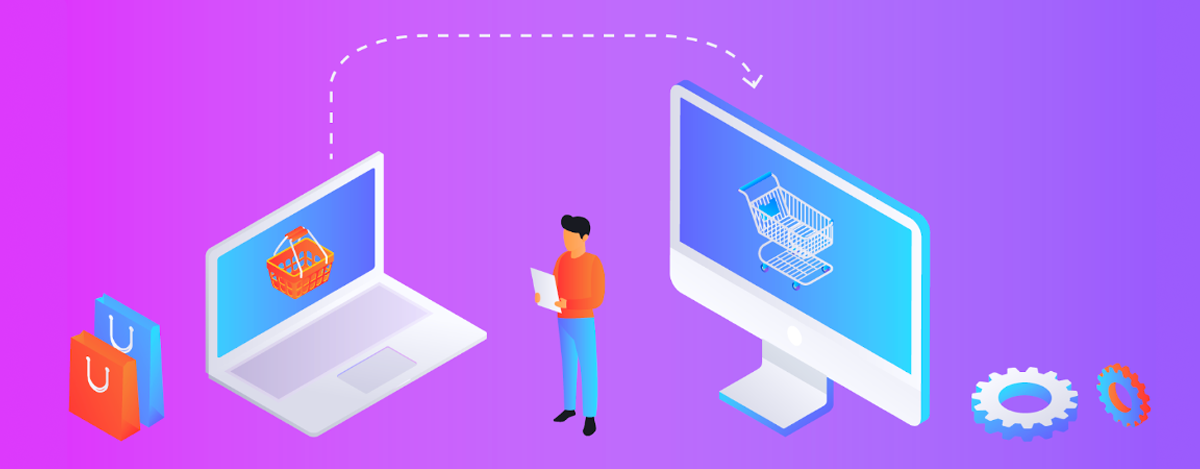It’s the best time of the year to consider replatforming!
The peak shopping season is over! The frantic six weeks of shopping madness have passed, and it is the perfect time to evaluate your store's performance. Many retail businesses start with an entry-level eCommerce site, which is very simple to set up and administer. As they grow, they find themselves with an eCommerce platform that is slow, unattractive, and too rigid to meet the future needs of their customers and the business. The platform's simplistic architecture impacts the back-end administration, causing the business to suffer from high operational costs due to a lack of automation.
If this sounds like where you're at, and you're feeling the need to replatform, the best place to start is by doing a gap analysis. Research all the factors that may have impacted your store’s performance. If through your research, the conclusion is that your current platform is impacting customer experience, and operational efficiency, it’s a great time to use that information to find the next generation's store. Start your gap analysis by looking at all the issues that can affect your store’s performance. The reasons may be technical, operational, or related to customer experience. The weight of all these negative issues can tip the balance to making the decision to replatform. Some of the factors to consider in this process include:
- Site speed & responsiveness - Is your page load time under 2 seconds? 40% of shoppers will abandon a site with greater than a 3-second response
- Poor User Experience - Does the site have a legacy architecture or too many plugins impacting customer experience?
- Administrative Overhead - Does the site lack automation capabilities, forcing your operations team to perform many repetitive tasks manually?
- Legacy Architecture - Is your eCommerce platform difficult to integrate with the new API-based services?
- Poor Site Administration? - Is your Admin panel difficult to use or so complex that you’re nervous to make changes that may negatively affect the site?
- GDPR Compliance? - GDPR is impacting all eCommerce sites and their use of cookies to get customer data. Will your platform be compliant with the new GDPR rules?

Along with the gap analysis, it’s important to understand the impact on the business when replatforming. There is a large investment of money, time, and effort to move to a new eCommerce platform. It is important to weigh the benefits of replatforming to ensure that you're making a qualified decision that will serve the business well for the foreseeable future. Things that should be considered include:
- Impact on the Business - What gains in efficiency, functionality, performance, and revenue are expected to be achieved by replatforming?
- Return On Investment - What is the expected ROI to be achieved through better customer experiences, increased sales, and process automation?
- Process automation & Integrations - Will the new platform integrate with new and existing systems & 3rd party apps to make operations more efficient?
- Impact on Employees - It is important whatever solution you decide on has employee input, and is designed to make them happier and more productive.
- Features & Capabilities - What features and capabilities will the new eCommerce platform provide to better serve your customers and your business?
- Invest Long Term - Look for an eCommerce platform that meets your current needs but also has the flexibility to evolve as the business matures.
- Customer Service & Support - Find a solution that has good support available. You may pay a little extra, but it will be money well invested when you need a helping hand.
Finally, you’ve done all your research and you’ve decided on an eCommerce platform. You understand all the dependencies, have mapped out all the integrations, and know what data will be ported over to the new website. The last thing to do is to pick a date to do a migration. It’s important to look at your visitor traffic and conversions and pick a time when the website has the least traffic. This way, the migration will have the least impact on your prospects and customers. It also gives you a window to troubleshoot any issues that come up during the migration. Once your new store is in place, it’s a great time to push out some marketing campaigns to tell your customers about your new and improved store, as well as attract news prospects. And make sure to listen to customer feedback so you can address any issues or make any changes that will provide a stellar customer experience.




